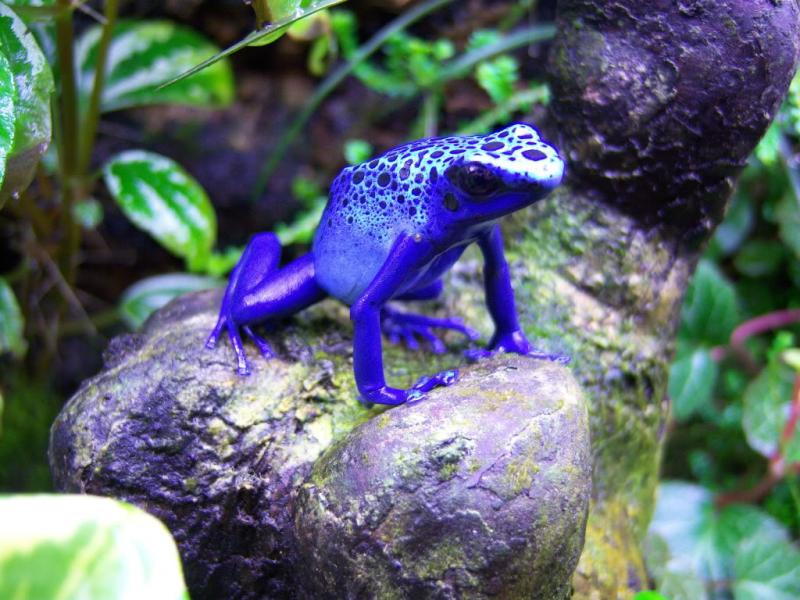
Costa Rica's Wildlife
By Hayley Ann Newnes
Costa Rica, in Central America, has one of the greatest biodiversities in the world, with around 4% of all Earth’s species found here. Part of the reason for this is to do with land movements thousands of years ago. When Costa Rica was formed, it acted as a bridge between the lands on either side and integrated wildlife from both, ending up with twice as many species to be found.
Baird’s Tapir
Baird’s Tapirs, tapirus bairdii, can be found in isolated populations in nearly every vegetation type, though they prefer forests for foraging. This species is the biggest of the Tapir kind, around the size of small donkeys. They form monogamous pairs and defend a territory, breeding at any time of year with a long gestation period and birth of one offspring. The young will remain with the mother for up to 2 years.
Tapirs have adapted to nocturnal behaviour to avoid the hottest times of day. They sleep close to freshwater wallowing holes and are largely solitary creatures, choosing to feed alone. Smell is their most important tool when locating food as their eyesight is not very good. Tapirs are strict herbivores with leaves making up much of their diet, however they also eat fruit, flowers, twigs and grasses.
The young are prey for pumas but otherwise they do not have many predators. Nowadays they are of interest for eco tourism and it may be fairly easy to arrange a trip to see them. Keep your eyes peeled near water for them, their camouflage often means they can be mistaken for rocks!
Red-Lored Parrot
Found in the canopy of the rainforest, the Red-lored Parrot Amazona autumnalis can prove to be quite the elusive creatures, avoiding human habited areas, although they are highly prized as pets. They are pretty multicoloured birds, with the main feather colour of this species being green and red. They nest in hollow trees where they raise offspring. The young do not stay with the parents long before they are ready to leave the nest, around 3 weeks.
The parrots lead sedentary lifestyles, living in pairs in mating season but flocks the rest of the time, moving around only between roosting and nesting places. They are noisy birds so you will probably hear them before you see them if you are lucky enough to catch a glimpse. They survive on nuts, seeds, fruit and berries and have powerful beaks and tongues to assist this process. They are prey for monkeys and snakes although humans can present the greatest threat to them through hunting.
Poison Dart Frog
This interesting amphibian, dendrobates auratus, is found on the rainforest floor near streams or pools. They are brightly coloured, usually a neon green with black spots, which is thought to be a warning to predators. Females lay eggs in water during the breeding season, which the males then take most of the responsibility for, carrying the hatched tadpoles to a lake or stream to develop. Tadpoles take around 6 weeks to become fully grown frogs.
They prey on small invertebrates and ants from which they gain an important alkaline substance to make themselves poisonous. They avoid predation through their toxicity, however this same poison is a desired substance for native tribes who use it on their weapons. They make excellent decorative pets and lose their toxicity in captivity through dietary changes, making them highly prized for zoos.
Margay
Cat lovers will adore these beautiful slender tree-climbers. Smaller than many other big cat species, the Margay, leopardus wiedii, is a spotted breed and inhabits the forest. Due to its endangered status the Margay may be rare to see, but they are active day and night which increases your chances. They have an unusual climbing style mainly thanks to the effectiveness of their rear feet, which can be twisted to allow themselves to suspend from trees.
They eat a wide range of prey, from other mammals to birds, amphibians, reptiles and even fruit. Young Margays begin the same diet after being weaned at around 8 weeks. Humans were their main predator, as in the past they were heavily hunted for their furs and conservation efforts are now underway to try to protect what is left of this species.
If you are interested in seeing the Margay, it has been spotted at a number of National Parks in Costa Rica. Santa Rosa National Park and Monteverde Cloud Forest Reserve in the north, and Corcovado National Park in the south of Costa Rica are all good places with a variety of other wildlife to enjoy even if you don’t glimpse the elusive Margay.
As with any wildlife-spotting trips, it is always a good idea to enlist the services of a guide, as these will usually be locals with extensive knowledge of the areas you are interested in. It is likely that they will know the favourite haunts of the animals you want to see so you won’t end up being disappointed, and a guide gives you extra peace of mind when staying safe in the forest.
Share this article:




















